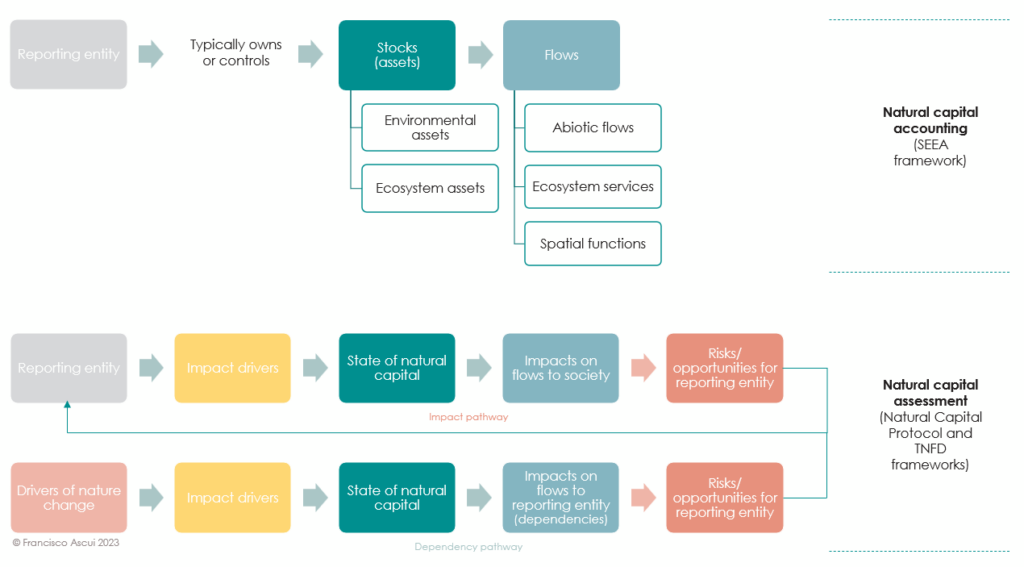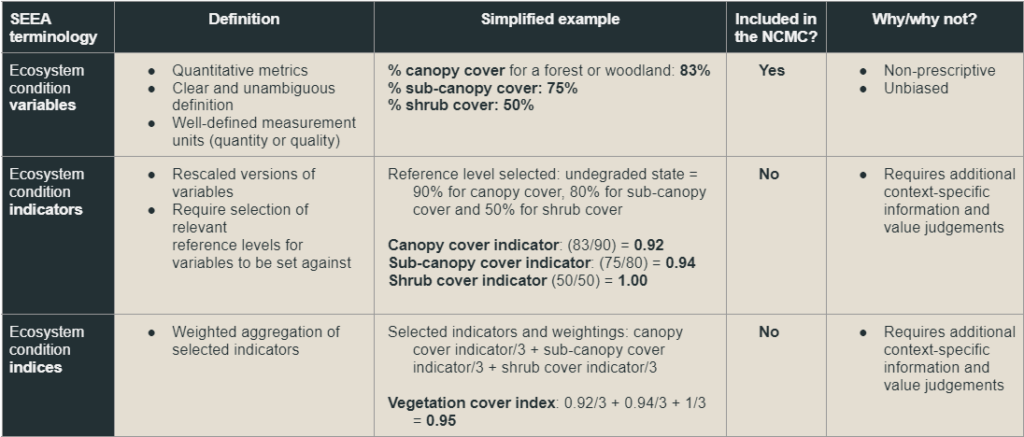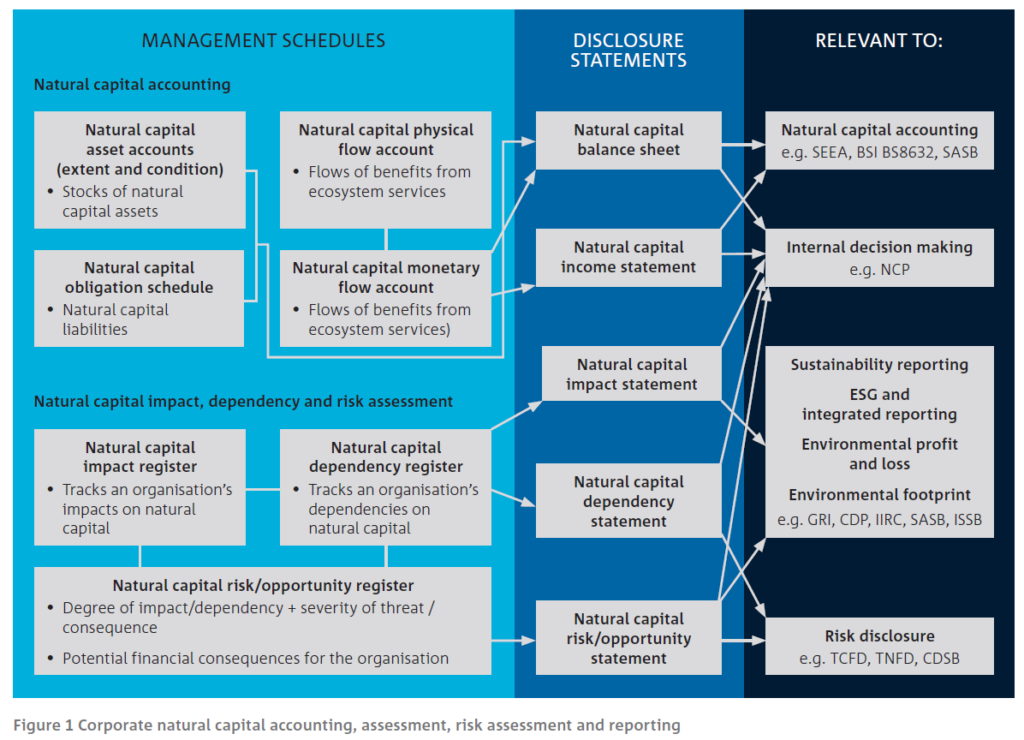How can I use the NCMC?
The User Guide provides help on how to use the NCMC including use cases, an explanation of key terms, an FAQ and further guidance materials. You can learn more about the NCMC here.
Which international standards and frameworks can the NCMC help me report to?
The NCMC is designed to present natural capital accounting and assessment metrics that are consistent with national and international standards and frameworks such as the United Nations System of Economic-Environmental Accounting (SEEA) and the Taskforce on Nature-related Financial Disclosures (TNFD).
How is the NCMC being developed?
The ongoing technical development of the NCMC is governed by a group of technical experts from CSIRO, ANU, La Trobe University, Griffith University, Federation University, Accounting for Nature and Farming for the Future. These experts have an active interest in advancing the measurement and management of natural capital in Australia and globally.
Refer to ‘About the NCMC for further details.
What are the relationships between natural capital accounting and natural capital assessment?
What are the Tiers?
Natural capital can be measured in many different ways, by different users for different purposes. The NCMC allocates metrics and methods to three tiers, corresponding to different user needs and approaches to measurement, as summarised in the table below.
- Verifiability, accuracy and costs tend to increase as you move from Tier 1 to Tier 3.
- Confidence/error tends to shift from unknown to quantified from Tier 1 to Tier 3.
- Ease of use and accessibility generally moves from easy through to challenging from Tier 1 to Tier 3.

What is the difference between ‘Environmental Assets’ and ‘Ecosystem Assets’?
Environmental Assets are measures for natural assets, relatively easily measured as individual components of the environment that provide economic benefits (e.g. mineral resources, land, timber and water). Covered by the SEEA Central Framework (SEEA-CF) and measured in terms of physical quantity and monetary value.
Ecosystem Assets are measures for the sub-set of environmental assets which involve diverse ecosystems. Ecosystem assets are covered by the SEEA Ecosystem Accounting (SEEA-EA) and measured in terms of extent and condition. Produce flows of ecosystem services which can be measured in physical and monetary terms.

How does NCMC Version 2.0 differ from the Version 1.0?
Version 2.0 includes updates to the technical content of the NCMC and improvements to the website user experience.
All updates were informed by extensive stakeholder feedback on Version 1.0, plus further inputs from Technical Reference Panel members, Advisory Group members, and a range of user experience, website and communication professionals.
Find out more from the ‘About the NCMC‘ page.
Where can I go to access further resources to support my overall natural capital measurement approach?
For more help navigating your overall approach to natural capital accounting or natural capital assessment, we recommend accessing CSIRO’s Natural Capital Handbook.
What is a metric vs a variable/indicator/index (SEEA definitions), and how are they included or not in the NCMC?
The following table outlines the SEEA definitions of variable vs indicators vs index (indices) and how they are included or not in the NCMC:
How are metrics, methods and other material selected for the NCMC?
To ensure the quality, integrity and interoperability of the NCMC, metrics, methods, data sources and reference materials are selected to align with a set of NCMC Inclusion Guidelines endorsed by the Technical Reference Panel.
Refer to ‘About the NCMC’ for further details.
Could the Catalogue be used for verification, is it connected with a verification standard?
The NCMC is not a certification framework, so it is up to users to decide if they wish to make any assertions about accounts or assessments based on the NCMC, and whether they wish to have these assertions verified, according to their own criteria or any other certification framework. Users should also take note of any guidance or restrictions on assertions contained in external materials that the NCMC may refer to.
While the NCMC is not a certification framework, it does provide three tiers for measurement methods, which generally correspond with increasing levels of assurance or auditability. Tier 1 usually depends on user-generated data which can be challenging to audit, whereas Tier 3 is associated with third-party instrumentation or data providers that typically produce auditable data.
Is the Catalogue only broad acre or could it extend to forestry?
The catalogue applies to all land use types.

